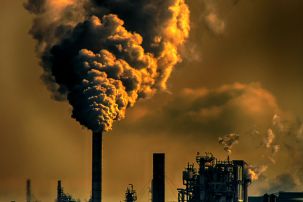Lesson summary
Students will investigate the state of the carbon budget designed to reduce emission by 2050. Given the budget and the percentage of emissions used between 2000-2013 students will calculate the rate of use, consider effects of percentage increases and decreases in emission rates for the remaining time frame and the anomalies between scientists and their own predictions. Students will then have the opportunity to use the skills applied through the worksheet the create their own plan for the reduction of emission.
Learning intentions:
Students will...
- understand how to change quantities to percentages and how to calculate percentage increase and decrease
- discover the impact of small and large percentage increase and decrease in carbon emissions and the effect of average rates emissions over time.
Lesson guides and printables
Lesson details
Curriculum mapping
Australian curriculum content descriptions:
Year 8 Mathematics:
- Solve problems involving the use of percentages, including percentage increases and decreases, with and without digital technologies (ACMNA187)
- Solve a range of problems involving rates and ratios, with and without digital technologies (ACMNA188)
General capabilities: Numeracy, Critical and creative thinking.
Cross-curriculum priority: Sustainability OI.1, OI.3.
Relevant parts of Year 8 Mathematics achievement standards: Students solve everyday problems involving rates, ratios and percentages.
Resources required
- Student Worksheet – one copy per student OR computers/tablets to access the online worksheet
- Calculator, Overspending our carbon budget, Global carbon budget.
Skills
This lesson is designed to build students’ competencies in the following skills:
- Critical thinking
- Critical finding
- Problem solving
- Collaboration
Additional info
This is an original Cool.org lesson. Facts and figures in these lessons may have changed since this lesson was published. We always endeavour to update our resources in a timely manner, but if you see an error or issue in our resources please get in touch with us.


Welcome back!
Don't have an account yet?
Log in with:
By signing up to Cool.org you consent and agree to Cool's privacy policy to
store, manage and process your personal information. To read more, please see
our privacy policy here(Opens in new tab).
Create your free Cool.org account.
Many of our resources are free, with an option to upgrade to Cool+ for premium content.
Already have an account?
Sign up with:
By signing up to Cool.org you consent and agree to Cool's privacy policy to
store, manage and process your personal information. To read more, please see
our privacy policy here(Opens in new tab).